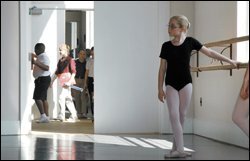The public sat up and took notice in the 1990s when a pair of California researchers published a study showing that college students performed better on some mathematical tests after listening to a 10-minute Mozart sonata. The problem was that the effects evaporated soon after the final piano notes sounded. An hour later, the students were no better at those math tasks than they had been before their listening session.
Researchers say that’s pretty much been the story all along for research seeking to show that what students learn in the arts spills over into mainstream subjects. With a few exceptions, that line of work never panned out the way arts education supporters had hoped.
“The correlational studies showed whopping correlations, but the experimental studies showed nothing,” said Ellen Winner, a Boston College psychologist who reviewed the research literature in 2000.
Now, though, a handful of new studies are taking a different—and some say, more productive—look at the same question. These researchers say the old “Mozart makes you smarter” studies asked the wrong questions and used measurements too narrow to capture arts learning’s full range of benefits. The trick now is to figure out how best to measure subtler benefits, such as persistence or the ability to conjure up mental images.
See a related research column,
“If there’s going to be transfer studies, these are going to have to use better measurements than high-stakes-testing scores,” said Robert A. Horowitz, an associate director of the Center for Arts Education Research at Teachers College, Columbia University.
‘Positivity Bias’
Mr. Horowitz and his research team have spent the past seven years studying four public elementary schools in New York City that have been taking part in an arts-in-education program. ArtsConnection recruits dancers, puppeteers, storytellers, and other artists to work closely with teachers over eight to 15 weeks to incorporate arts into the curriculum.
The researchers spent four years interviewing educators and students and observing and videotaping classrooms to figure out what students had gained from their experiences. Teachers, for example, said students became more confident and more motivated, learned to express and elaborate on their ideas better, and improved their classroom relationships.

Over the next three years, Mr. Horowitz designed and tested survey scales to measure such improvements. Although all the schools reported improvements in children’s cognitive and social skills, the gains rated highest occurred in classrooms with long-running, well-established collaborations between artists and classroom teachers.
Colleagues such as Ms. Winner remain skeptical. “There’s such a positivity bias because, of course, when you ask people, everybody’s going to say it’s great,” she said. In her own work with Harvard University’s Project Zero, Ms. Winner is approaching the problem differently. In one project, she and her research partner, Lois Hetland, are exploring whether the thinking skills taught to high school students in a magnet visual-arts program—such as the ability to think critically—transfer to their science classes.
Ms. Winner also teamed up two years ago with Harvard neurologist Gottfried Schlaug to track changes taking place in younger children’s brains and cognitive skills as they learn to play musical instruments. The study involves a total of 70 children—30 who are studying piano, violin, or some other instrument, and 20 taking no music lessons.
The children, all between 5 and 7 when the experiment began, undergo annual tests and brain scans via magnetic-resonance imaging, a harmless technique that uses radio waves to map blood flow and oxygenation rates in the brain.
So far, results show that the children in the music-study group have more overall gray matter than the comparison group, according to Ms. Winner, but researchers have yet to pinpoint where that growth has occurred. Later, the researchers will compare the growth patterns they find with those for a similar group of children studying foreign languages.
“It may be that any kind of intensive work with one-on-one lessons and homework every night produces the same kinds of changes,” Ms. Winner said.
Clearer Standards
At the Annenberg Institute for School Reform at Brown University in Providence, R.I., researcher Dennis P. Wolf led a yearlong study focusing on students at three comprehensive high schools who do better in arts classes than they do in their regular academic ones. Her aim is to explore why arts classes engage those students more than their other studies.
“Kids say the standards for doing good work are clearer in the arts than they are in academics,” Ms. Wolf said of her study. Through diaries the students kept as part of the study, the researchers have also learned that the teenagers’ arts involvement structures their free time in constructive ways.
Ms. Wolf has also been tracking the learning gains made by elementary pupils taking part in a Dallas-based program known as ArtsPartners. Like the New York City program, that venture enlists museums, theaters, and other arts groups to help raise academic achievement by integrating cultural opportunities into the curriculum. The study has found, for instance, that students who visit a museum produce measurably better writing than those asked to write on the same theme after reading a textbook.
Still, some critics contend that the arts are important for their own sake, and they take offense at research casting such learning as a “handmaiden” to academic subjects. But experts and arts education supporters say it’s critical to document any spillover effects because the arts, in many places, are falling by the wayside in the push to hold schools accountable for improving students’ test scores in mathematics and language arts.
Ms. Wolf said the trend toward establishing smaller high schools also threatens arts instruction in some schools. “We just wanted to enter the argument that maybe people ought to think twice about sacrificing the arts,” she said.





